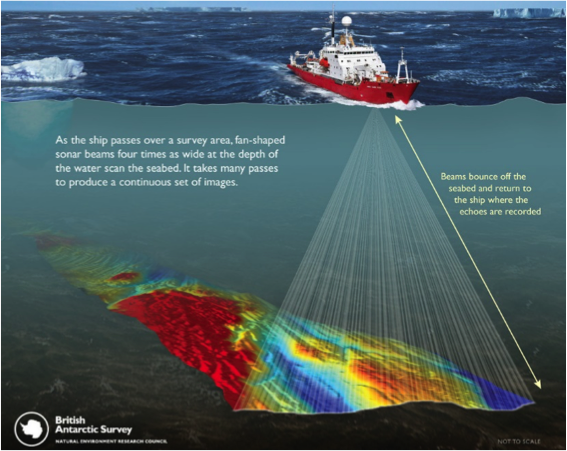Take a close look at the diagram below, which was produced by the British Antarctic Survey to show how a multibeam works. This is the primary tool we use on the ship to collect information about the shape of the seafloor. Does it remind you of anything? What animals do you think they studied in order to develop this mapping system? I have a few interesting facts I will share with you tomorrow, but take a minute to do some research yourself and tell me something fascinating you learn about the species that were using multibeam technology long before humans ever invented it.

Date
Location
Onboard the R/V Nathaniel B. Palmer icebreaker in the Amundsen Sea off the southwest coast of Antarctica
Expedition
Weather Summary
Mostly cloudy with a few breaks of sunshine
Temperature
-1.6 C
Wind Speed
8.4 knots out of the east
Wind Chill
-11.8 C


Comments